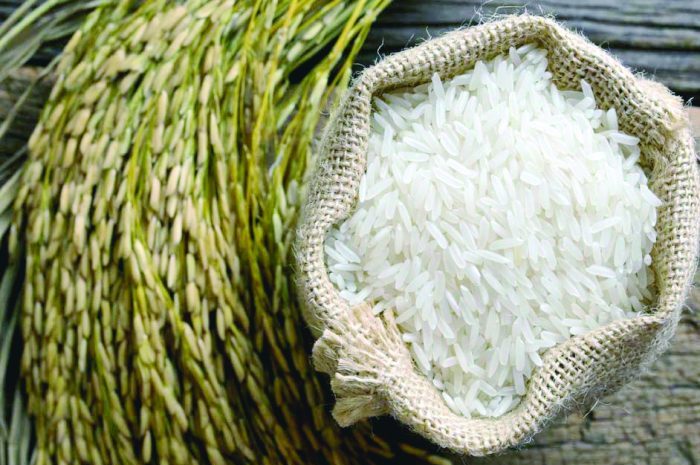Prediabetes is a condition characterized by elevated blood glucose levels that are not yet high enough to be classified as type 2 diabetes. It serves as a critical warning sign, indicating a higher risk of developing diabetes, cardiovascular disease, and other health issues. However, with timely intervention, including dietary changes, physical activity, and weight management, it is possible to prevent or delay the progression to diabetes. This article will provide a comprehensive guide on what foods a prediabetic should eat, focusing on promoting stable blood sugar levels and overall health.
Understanding the Role of Diet in Prediabetes
Diet plays a pivotal role in managing prediabetes. The right food choices can help stabilize blood glucose levels, reduce insulin resistance, and promote weight loss, all of which are crucial in preventing the onset of type 2 diabetes. A prediabetic diet should be balanced, nutrient-dense, and focused on whole foods, while minimizing processed and high-sugar foods.
The Basics of a Prediabetic Diet
Focus on Low Glycemic Index (GI) Foods: The glycemic index measures how quickly a food raises blood sugar levels. Low-GI foods are digested and absorbed more slowly, leading to a gradual rise in blood sugar. Incorporating these foods can help maintain stable blood glucose levels.
Emphasize Whole Grains: Unlike refined grains, whole grains retain their fiber, vitamins, and minerals. Fiber is particularly beneficial as it slows down the absorption of glucose, helping to prevent spikes in blood sugar levels.
Prioritize Lean Proteins: Proteins have minimal impact on blood glucose levels and can enhance satiety, which helps with weight management. Opt for lean protein sources to reduce the intake of saturated fats.
Incorporate Healthy Fats: Unsaturated fats, particularly omega-3 fatty acids, are beneficial for heart health and can help reduce inflammation. Avoid trans fats and limit saturated fats.
Increase Fiber Intake: High-fiber foods slow down digestion and the absorption of sugar, promoting more stable blood glucose levels. Aim for a variety of fiber sources, including fruits, vegetables, legumes, and whole grains.
Stay Hydrated: Proper hydration is essential for overall health and can help regulate blood sugar levels.
Detailed Food Recommendations for Prediabetics
1. Vegetables
Vegetables are a cornerstone of a prediabetic diet. They are low in calories and carbohydrates, making them ideal for blood sugar control and weight management. Aim to fill half your plate with non-starchy vegetables.
- Non-Starchy Vegetables: These include leafy greens (spinach, kale, arugula), cruciferous vegetables (broccoli, cauliflower, Brussels sprouts), and other options like peppers, cucumbers, and tomatoes. These vegetables are low in carbohydrates and high in fiber, vitamins, and minerals.
- Starchy Vegetables: While still nutritious, starchy vegetables like sweet potatoes, corn, and peas have higher carbohydrate content. They should be consumed in moderation and balanced with low-GI foods.
2. Fruits
Fruits are rich in vitamins, minerals, and fiber, but they also contain natural sugars. The key is to choose fruits with a low glycemic index and consume them in moderation.
- Low-GI Fruits: Berries (strawberries, blueberries, raspberries), cherries, apples, pears, and citrus fruits (oranges, grapefruits) are excellent choices. These fruits provide essential nutrients without causing significant spikes in blood sugar levels.
- Portion Control: Even with low-GI fruits, it’s important to monitor portion sizes to avoid excessive sugar intake.
3. Whole Grains
Whole grains are a critical component of a prediabetic diet due to their high fiber content, which aids in regulating blood sugar levels.
- Recommended Whole Grains: Oats, quinoa, barley, bulgur, whole wheat, brown rice, and farro. These grains provide a steady release of glucose into the bloodstream, preventing rapid spikes.
- Avoid Refined Grains: Foods made from white flour, such as white bread, pastries, and many breakfast cereals, should be limited as they can cause quick rises in blood sugar levels.
4. Lean Proteins
Protein is essential for muscle maintenance and repair and can help keep you feeling full longer, which is beneficial for weight control.
- Lean Protein Sources: Skinless poultry, fish, legumes (beans, lentils), tofu, tempeh, low-fat dairy products, and eggs. These options provide high-quality protein without excessive saturated fat.
- Fish: Particularly fatty fish like salmon, mackerel, and sardines, which are high in omega-3 fatty acids, are especially beneficial for heart health.
5. Healthy Fats
Incorporating healthy fats into a prediabetic diet can help manage inflammation and improve heart health.
- Sources of Healthy Fats: Avocados, nuts (almonds, walnuts), seeds (chia, flax, pumpkin), olive oil, and fatty fish. These fats should replace trans fats and limit saturated fats found in processed and red meats.
- Moderation: While healthy fats are beneficial, they are also calorie-dense, so portion control is important to avoid weight gain.
6. Dairy
Dairy products can be part of a prediabetic diet if they are low in fat and consumed in moderation.
- Low-Fat Dairy Options: Skim or low-fat milk, yogurt, and cheese. These options provide calcium and protein without the added saturated fats found in full-fat versions.
- Unsweetened Products: Choose unsweetened or lightly sweetened dairy products to avoid excess sugar intake.
7. Legumes
Legumes are a great source of plant-based protein and fiber, both of which are beneficial for blood sugar control and overall health.
- Examples of Legumes: Beans (black beans, chickpeas, kidney beans), lentils, and peas. These foods can be included in a variety of dishes, from salads to soups and stews.
8. Beverages
Beverages can significantly impact blood sugar levels, so choosing the right ones is crucial.
- Water: The best choice for hydration, with no impact on blood sugar levels.
- Herbal Teas: Unsweetened herbal teas are a good alternative to sugary drinks.
- Coffee: Can be consumed in moderation, but be mindful of added sugars and high-fat creamers.
- Limit Sugary Drinks: Avoid sodas, sweetened coffees and teas, energy drinks, and fruit juices with added sugars.
Meal Planning Tips for Prediabetics
Balance Your Plate: Each meal should include a balance of non-starchy vegetables, lean proteins, whole grains, and healthy fats. This balance helps maintain steady blood sugar levels and provides a variety of nutrients.
Portion Control: Monitoring portion sizes is crucial to avoid overeating, which can lead to weight gain and elevated blood sugar levels. Use measuring cups or a food scale if necessary.
Eat Regularly: Skipping meals can lead to overeating later and cause blood sugar levels to fluctuate. Aim for three balanced meals and two healthy snacks per day.
Healthy Snacking: Choose snacks that include protein, fiber, and healthy fats to keep you satisfied between meals. Examples include a small handful of nuts, a piece of fruit with a small amount of nut butter, or yogurt with berries.
Limit Processed Foods: Processed foods often contain added sugars, unhealthy fats, and refined carbohydrates. Focus on whole, minimally processed foods as much as possible.
Read Labels: Pay attention to nutrition labels and ingredient lists to identify added sugars and unhealthy fats in packaged foods.
Cook at Home: Preparing meals at home allows you to control the ingredients and portion sizes, making it easier to follow a healthy diet.
Sample Meal Plan for Prediabetics
Breakfast
- Option 1: Oatmeal topped with berries, a sprinkle of chia seeds, and a small handful of nuts.
- Option 2: Greek yogurt with sliced almonds, flaxseeds, and a drizzle of honey.
- Option 3: A smoothie made with spinach, avocado, unsweetened almond milk, and a scoop of protein powder.
Mid-Morning Snack
- Option 1: A small apple with a tablespoon of almond butter.
- Option 2: Carrot sticks with hummus.
- Option 3: A handful of mixed nuts and seeds.
Lunch
- Option 1: Grilled chicken salad with mixed greens, cherry tomatoes, cucumber, and a vinaigrette dressing.
- Option 2: Quinoa and black bean bowl with roasted vegetables and avocado.
- Option 3: Whole grain wrap with turkey, lettuce, tomato, and a light spread of hummus.
Afternoon Snack
- Option 1: A small serving of cottage cheese with sliced peaches.
- Option 2: A hard-boiled egg and a few whole-grain crackers.
- Option 3: Celery sticks with natural peanut butter.
Dinner
- Option 1: Baked salmon with a side of steamed broccoli and a quinoa pilaf.
- Option 2: Stir-fried tofu with mixed vegetables and brown rice.
- Option 3: Lean beef stir-fry with bell peppers, onions, and a side of barley.
Evening Snack
- Option 1: A small bowl of mixed berries.
- Option 2: A slice of whole-grain toast with avocado spread.
- Option 3: A handful of air-popped popcorn.
Additional Lifestyle Tips for Managing Prediabetes
Regular Physical Activity: Exercise helps increase insulin sensitivity and lowers blood sugar levels. Aim for at least 150 minutes of moderate-intensity aerobic exercise per week, along with strength training exercises twice a week.
Maintain a Healthy Weight: Weight loss can significantly improve insulin sensitivity and reduce the risk of progressing from prediabetes to diabetes. Even a modest weight loss of 5-7% of body weight can have substantial health benefits.
Monitor Blood Sugar Levels: Regularly checking your blood sugar levels can help you understand how different foods and activities affect your blood glucose. Work with your healthcare provider to determine the best monitoring plan for you.
Manage Stress: Chronic stress can negatively impact blood sugar levels. Practice stress-reducing techniques such as mindfulness, meditation, deep breathing exercises, or engaging in hobbies you enjoy.
Get Enough Sleep: Poor sleep can affect insulin sensitivity and blood sugar control. Aim for 7-9 hours of quality sleep per night.
Avoid Smoking and Limit Alcohol: Smoking increases the risk of developing type 2 diabetes and other health issues. If you drink alcohol, do so in moderation, as excessive alcohol can cause fluctuations in blood sugar levels.
See also:What Diabetics Can and Cannot Eat
Conclusion
Managing prediabetes through dietary changes is a proactive approach to prevent the progression to type 2 diabetes. By focusing on a balanced diet rich in whole foods, lean proteins, healthy fats, and low-GI carbohydrates, individuals can stabilize their blood sugar levels, maintain a healthy weight, and improve overall health. Incorporating regular physical activity, monitoring blood sugar levels, and adopting a healthy lifestyle can further enhance the benefits of a prediabetic diet. Consult with a healthcare provider or a registered dietitian to create a personalized meal plan that meets your specific needs and goals.
Related topics:
How Many Eggs Can Diabetics Eat?

























